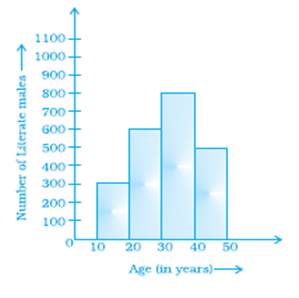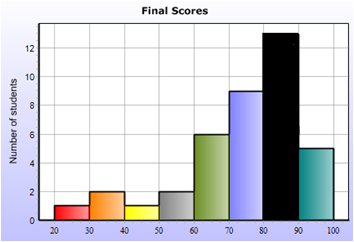8th Grade > Mathematics
DATA HANDLING MCQs
:
B
Probability=no. of favorable outcomestotal no. of outcomes
Therefore, the probability of getting a blue ball=25
While the probability of getting a black ball =15
Also, the probabiltiy of getting a green ball =15
So the eventsarenot equally likely.
:
A
Let the total number of people surveyed is x.
Given that 55% of all the people surveyed play cricket.
So, 55% of x= 1100.
55x100=1100
x=1100×10055
x=2000
Hence there are 2000 people were surveyed..
:
C
Central angle
=no. of laborersno. of workers×360∘
=75216×360∘
=125∘
:
D
Below the age of 30, the following the frequencies in the different age groups:
10-20 years: 300 literate males
20-30 years: 600 literate males
Therefore, the required number is 300+600 = 900
:
A
If a die is thrown then the outcomes which are multiple of 3 are 3 and 6.
So the probability of getting 3 and 6
=Outcomes of interestTotal number of outcomes
=26 = 13
:
C
A set of numerical facts, collected with a definite object in view, is known as data.
:
From the given histogram, it can be observed that 2 divisions on the y-axis correspond to 1 student.
Hence, the number of students scoring between 80-90 = 13
:
A
The probability of getting a white ball is 0 as there are 0 white balls.
:
D
Probability=Number of favourable outcomesTotal Number of outcomes
Number of white squares (favourable outcomes) = 32
Total number of squares or outcomes = 64
So probability of coin falling in a white square
=Number of white squaresTotal number of squares
=3264
=12
:
B
The cards are numbered as 1,2,3,4,5,6,7
Total number of outcomes = 7
Number of odd numbers (favourable outcomes) = 4
Number of even numbers (favourable outcomes) = 3
Probability=Number of favourable outcomesTotal Number of outcomes
Probability of getting odd number
=Number of odd numbered cardsTotal number of cards;
=47
Probability of getting even number
=Number of even numbered cardsTotal number of cards
=37
Probabilities are different. Hence, the statement is false.


















